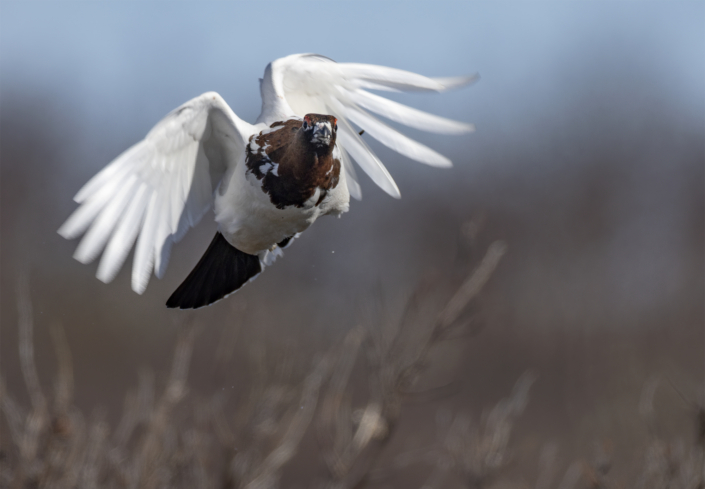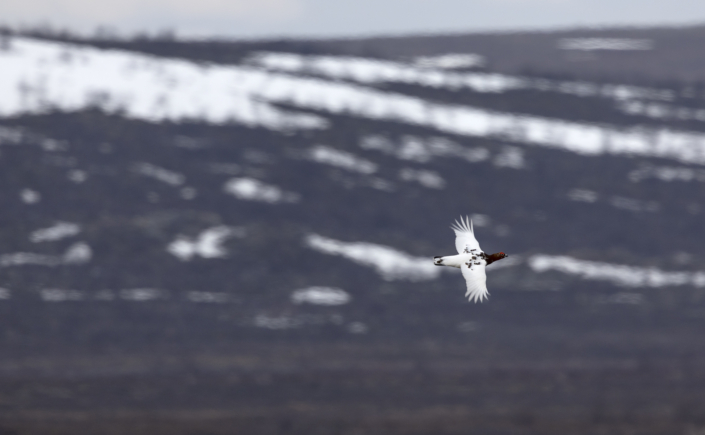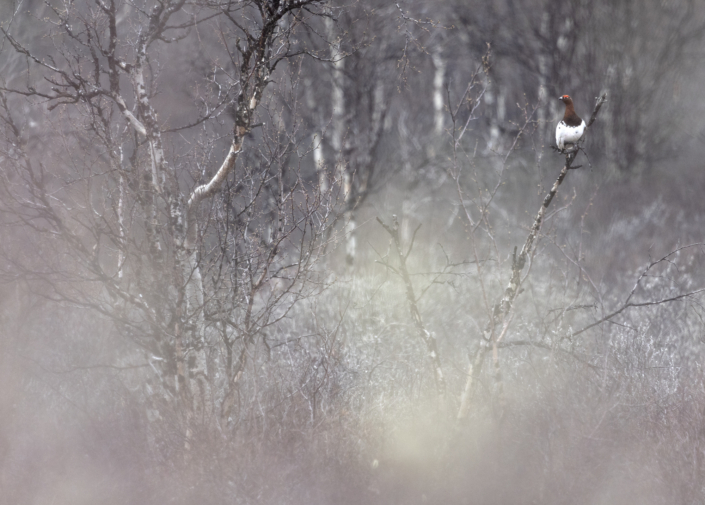This post is also available in: Swedish
Willow ptarmigan – Lagopus lagopus
Willow ptarmigan – Lagopus lagopus
is a bird in the grouse subfamily Tetraoninae of the pheasant family Phasianidae. It is also known as the willow grouse and in Ireland and Britain, where it was previously believed to be a separate species, as the red grouse. It is a sedentary species, breeding in birch and other forests and moorlands in northern Europe, the tundra of Scandinavia, Siberia, Alaska and northern Canada, in particular in the province of Newfoundland and Labrador. It is the state bird of Alaska. In the summer the birds are largely brown, with dappled plumage, but in the winter they are white with some black feathers in their tails (British populations do not adopt a winter plumage). The species has remained little changed from the bird that roamed the tundra during the Pleistocene. Nesting takes place in the spring when clutches of four to ten eggs are laid in a scrape on the ground. The chicks are precocial and soon leave the nest and while they are young, both parents play a part in caring for them. The chicks eat insects and young plant growth while the adults are completely herbivorous, eating leaves, flowers, buds, seeds and berries during the summer and largely subsisting on the buds and twigs of willow and other dwarf shrubs and trees during the winter. The willow ptarmigan can be distinguished from the closely related rock ptarmigan (Lagopus muta) by its larger size and thicker bill and by the fact that it is not generally found above the tree line while the rock ptarmigan prefers more elevated, barren habitat. The summer plumage is browner and in the winter, the male willow ptarmigan lacks the rock ptarmigan’s black stripe between the eyes and bill. The white-tailed ptarmigan (Lagopus leucura) in North America is smaller, has a white tail and finely-barred greyer plumage and lives permanently above the tree line. The distinctive British Isles subspecies L. l. scoticus (red grouse) was once considered a separate true British species but is now classified as a sub-species. This moorland bird is reddish brown all over, except for its white feet.
It sounds like thisRecording by Terje Kolaas from Xeno canto













